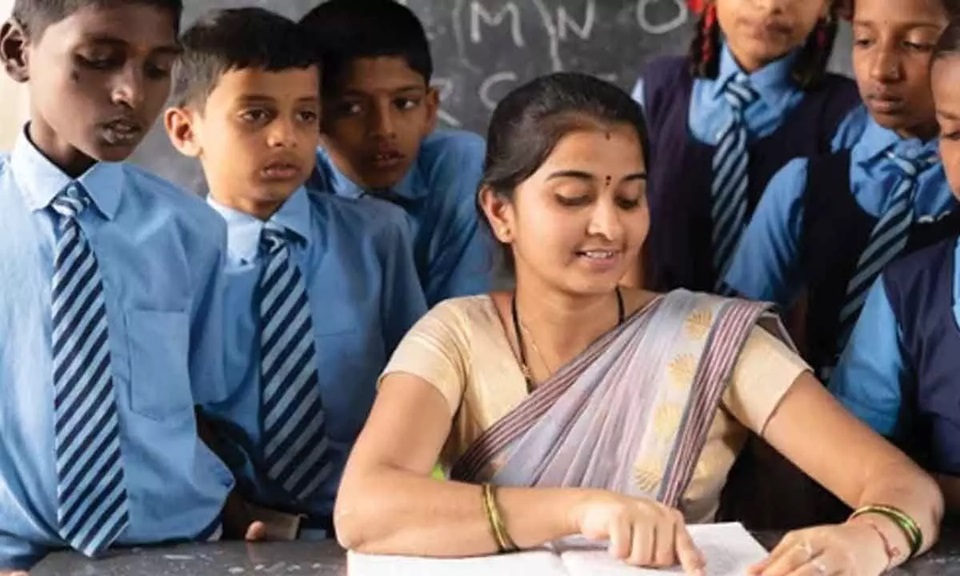KSEAB Karnataka Second Year D.El.Ed. English Question Paper January 2025
Organisation : Karnataka School Education and Assessment Board (KSEAB)
Exam : Second Year D.El.Ed. Supplementary Exam
Document Type : Question Paper
Subject : Facilitating Learning (HPS) English
Year : January 2025
Website : https://kseeb.karnataka.gov.in/kseabotherexam3/downloadqp.aspx
KSEAB D.El.Ed. Second Year English Question Paper
Download Karnataka School Education and Assessment Board (KSEAB) Second Year D.El.Ed. Supplementary Exam January 2025 Facilitating Learning (HPS) English Question Paper.
Related / Similar Question Paper : KSEAB Karnataka First Year D.El.Ed. English Question Paper January 2025

KSEAB D.El.Ed. Second Year English Questions
I. Choose the best option for the following questions :
1. According to Piaget a child’s thought processes are at the concrete stage.
(A) Between ages of 7 and 11
(B) Between ages of 3 and 10
(C) Between ages of 6 and 11
(D) Between ages of 7 and 8
2. Zone of Proximal Development (ZPA) was introduced by:
(A) Bruner
(B) Chomsky
(C) Stephen Krashen
(D) Vygotsky
3. In language teaching, the approach that is based on words and word combination is
(A) Lexical approach
(B) Task Based Language Teaching
(C) Communicative approach
(D) Structural approach
4. A language learning environment can be conditioned through repeated performance. This is the view of
(A) Humanists
(B) Behaviourists
(C) Congitivists
(D) Structuralists
5. Illustration is an example for
(A) An appraoch
(B) A technique
(C) A method
(D) A teaching- learning material
6. Testing the overall ability to use language at a certain point of time is
(A) Diagnostic test
(B) Proficiency test
(C) Achievement test
(D) Placement test
7. A child reads forward and backward which disturbs comprehension and speed in reading. This error comes under:
(A) Summarising
(B) vocalisation
(C) Regression
(D) Skipping
8. Finding a particular piece of information from a text is called.
(A) Skimming
(B) Scanning
(C) Coding
(D) Finding
9. Audio – video material develop students
(A) Comprehension
(B) Pronunciation
(C) Stress and Instonation
(D) All
10. Which one is not example for non-pedagogic material?
(A) Posters
(B) Menucard
(C) Textbook
(D) Advertisements
Part – B:
II. Answer any five of the following questions:
11. List the characteristics of young learners.
12. List any four strategies a language teacher can use to help a visual learner to learn a language.
13. Create a dictionary based activity.
14. Why is the big book so important in primary classroom?
15. What are the process involved in writing ?
16. What is a checklist?
17. Write any four subskills of listening.
18. Explain the use of authentic materials in teaching english.
Part – C:
III. Answer the following questions. 8 × 5 = 40
19. (a) In a constructivist classroom, children or not viewed as passive learners. Substantiate.
OR
(b) What are the five basic hypothesis of Krashen’s language acquisition theory? Explain any one.
20. (a) Explain any five activities to develop listening skill among learners.
OR
(b) Prepare a gap filling activitity and sequencing task activity for developing reading skill.
21. Write the eleven commandments of a language classroom
22. (a) Prepare a checklist to assess speaking skill.
OR
(b) List the activities to assess writing skills and explain any two.
23. (a) Explain any five games to improve spelling.
OR
(b) What are the models of reading process ? Explain any one.

Download KSEAB D.El.Ed. Second Year English Question Paper
Download Here : https://www.pdfquestion.in/uploads/pdf2025/43718-english.pdf